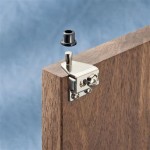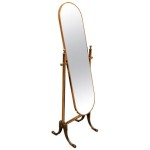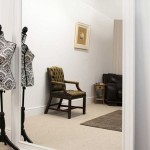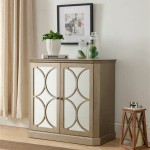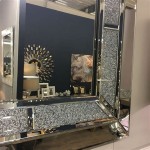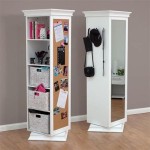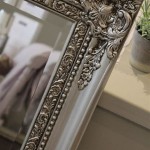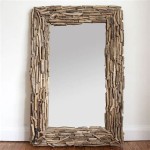Best Way to Hang a Heavy Mirror on a Sheetrock Wall
Hanging a heavy mirror on a sheetrock wall requires careful planning and execution to ensure both the mirror's safety and the wall's integrity. Improper installation can lead to damage, so understanding weight distribution and proper anchoring techniques is crucial.
The first step involves accurately assessing the mirror's weight. Bathroom scales can provide a reasonable estimate. This weight determines the appropriate hanging hardware and installation method.
Selecting the correct hardware is paramount. Standard picture hooks are insufficient for heavier mirrors. Instead, heavy-duty picture hangers specifically designed for substantial weight, often utilizing multiple nails or screws for added support, offer a viable option. These hangers typically indicate their weight capacity directly on the packaging.
For very heavy mirrors, utilizing wall anchors provides the most secure solution. Several anchor types suit this purpose. Toggle bolts offer exceptional holding power in hollow walls like sheetrock. They work by expanding behind the wall, distributing the weight across a wider area. Molly bolts, another sturdy option, also expand behind the wall, creating a firm grip.
Another reliable choice is the D-ring hanger system. This involves attaching D-rings to the back of the mirror and corresponding hooks or screws to the wall. This method is especially effective for large, heavy mirrors as it distributes the weight evenly. Wire hangers, though commonly used for lighter pictures, are generally not recommended for heavy mirrors due to the potential for wire breakage or slippage.
Before installation, careful preparation is necessary. The desired hanging location should be measured and marked accurately. A stud finder can help locate wall studs for added support, though anchors typically offer sufficient strength in most cases. A level ensures the mirror hangs straight.
When using anchors, drilling the correct size pilot hole is essential. The anchor packaging will specify the appropriate drill bit size. Oversized holes compromise the anchor's grip, while undersized holes make insertion difficult. After drilling, the anchor is inserted and secured according to the manufacturer's instructions.
For D-ring hangers, accurate placement of the D-rings on the back of the mirror is key. They should be equidistant from the center and level with each other. Measuring and marking carefully beforehand prevents uneven hanging. The corresponding wall hooks or screws should be positioned to align with the D-rings when the mirror is hung.
Once the hardware is installed, carefully lift the mirror and hang it on the chosen hardware. Having assistance for heavier mirrors is advisable to avoid accidents and ensure proper placement. After hanging, double-check the mirror's stability and levelness. A gentle tug test can confirm the security of the hanging.
Beyond the hardware, adhesive solutions can provide supplementary support for heavy mirrors. Mirror mastic, a specialized adhesive, can be applied to the back of the mirror before hanging. This adds another layer of security and helps prevent movement. However, it is crucial to use mastic in conjunction with appropriate hanging hardware and not as the sole means of support.
Choosing the right hanging location contributes to the mirror's overall stability. Areas with minimal vibration are preferable. Avoid hanging heavy mirrors on walls directly adjacent to doors or high-traffic areas, as vibrations can loosen the hardware over time. Walls backed by studs offer added reinforcement.
Regular inspection of the hanging hardware is recommended. Over time, vibrations, temperature fluctuations, and humidity can affect the hardware’s integrity. Check for signs of loosening or damage periodically and tighten or replace components as needed. This proactive approach helps prevent accidents and ensures the mirror's long-term stability.
Different wall materials require different approaches. While this article focuses on sheetrock, hanging heavy mirrors on other wall types, such as plaster or concrete, may necessitate alternative hardware and installation methods. Researching these specific requirements ensures proper support and prevents wall damage. Consulting a professional handyman is advisable when dealing with particularly heavy mirrors or complex wall materials.
How To Hang A 100 Pound Mirror On Drywall Quora

A Better Way To Hang Heavy Mirror Hanging Pictures On The Wall

How To Hang A Large Or Heavy Mirror

How To Hang A Heavy Mirror On Drywall Stas Picture Hanging Systems

How To Hang A Very Heavy Picture Or Mirror The Best

How To Hang A Heavy Mirror With Pictures Wikihow

How To Hang A Heavy Mirror The Home Depot

Hanging Heavy Mirror On Plaster Walls 6 Steps With Pictures Instructables

How To Hang A Heavy Mirror With French Cleat

How To Hang A Heavy Mirror C R F T

